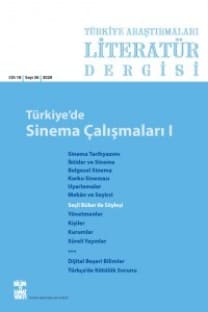Bir Edebiyat Disiplini Kurucusu: Mehmet Kaplan
Nihad Sâmi Banarlı (1907-1874) Cumhuriyet devrinin en önemli edebiyat öğretmeni, edebiyat tarihçisi ve yazarlardandır. Resimli Türk Edebiyatı Tarihi, lise ders kitapları, Yahya Kemal ile ilgili çalışmaları, dergi ve gazetelerde yer alan çok sayıda ilmî, fikrî ve edebî yazıları vardır. Hayatı boyunca öğrencilere ve geniş okuyucu kitlesine millî değerleri millî bilinçle öğretmek amacıyla çalışmıştır. Ana konusu olan Türk dili ve edebiyatını tarihî, sosyolojik ve estetik zeminde ele aldığından, tarih, din, tasavvuf, mimari, musiki gibi mevzular üzerinde de durmuştur. Uzun süren öğretmenlik hayatından edindiği tecrübeyle, eğitim ve öğretimde doğru bilginin, sevdiren, benimseten bir metotla sunulması gerektiğine inanmış, bu sebeple çalışmalarında kullandığı dil ve üslûba çok dikkat etmiş, özellikle dergi ve gazetelere yazdığı yazılarında, Türk edebiyatının güzide metinlerinden seçtiği örneklerle zenginleştirdiği, zaman zaman da romantik ifadeler taşıyan üslubu tercih etmiştir.
Anahtar Kelimeler:
Nihad Sâmi Banarlı, Türkçe, Türk Edebiyatı Tarihi, Lise Edebiyat Ders Kitabı, Yahya Kemal
Mehmet Kaplan: A Founder of Literature as a Discipline
Nihad Sâmi Banarlı (1907-1974) is one of the most prominent teachers and historians of literature as well as one of the writers of the Republican era. He produced several high school course books, works on Yahya Kemal as well as academic, literary and ideological articles published in periodicals and newspapers. He is also the author of the definitive book Pictorial History of the Turkish Literature. Throughout his life, he worked strenuously to teach national values to his students and wide array of readers with a national consciousness. Since he examined his core subject, namely Turkish language and literature on historical, sociological and aesthetical grounds, he also exerted emphasis on history, religion, mysticism, architecture and music. With his vast experience in teaching, he believed that the correct information in education should be conveyed to students in an appealing and stimulating fashion. For this reason, he paid special attention to his language and style. Especially in his articles for periodicals and newspapers, he resorted to a style that was sometimes enriched with significant quotes from some texts in Turkish literature and sometimes infused with romantic statements.
Keywords:
Nihad Sâmi Banarlı, Turkish, History of Turkish Literature, High School Literature Textbook, Yahya Kemal,
- ISSN: 1303-9369
- Başlangıç: 2003
- Yayıncı: Bilim ve Sanat Vakfı
Sayıdaki Diğer Makaleler
Abdülhalim Memduh'tan Ahmet Hamdi Tanpınar'a Edebiyat Tarihlerinde Yenileşmenin Sınırları
Bir Edebiyat Disiplini Kurucusu: Mehmet Kaplan
Türk Edebiyatında Deneme Literatürü
Türk Edebiyatında Eleştiri: Cumhuriyet Devri
Türk Edebiyatında Tarihî Romanlar Üzerine Yapılmış Tezler
Türk Edebiyat›nda “Edebî Röportaj”
Tanzimat'tan II. Meşrutiyet'e Türk Romanı
Türk Edebiyatında Tiyatro: Cumhuriyet Devri
II. Meşrutiyet'ten Cumhuriyet'e Türk Romanında Yeni Açılımlar
